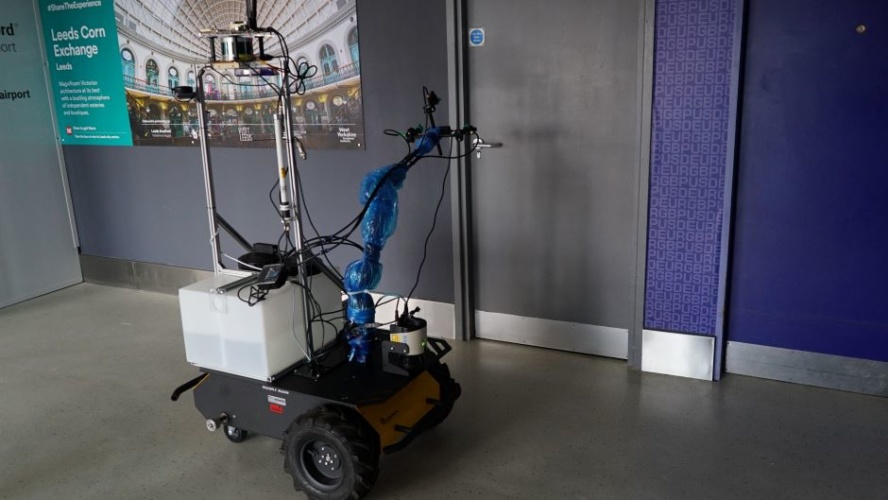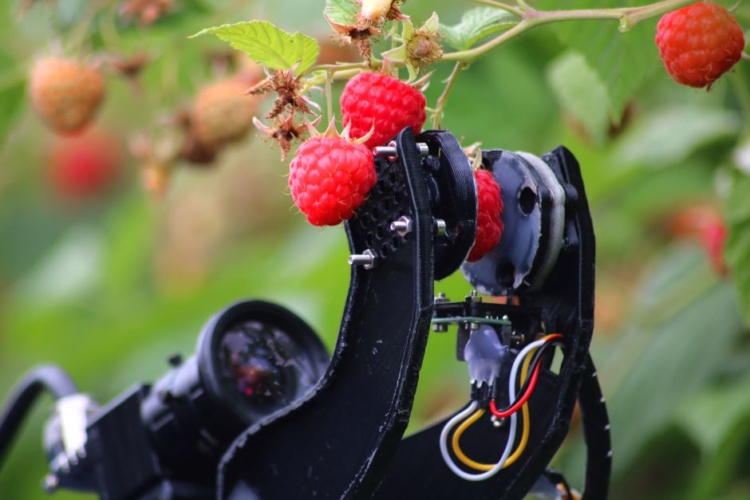Maddie Walker and Dan Farrell explain how COVID-19 will re-define the use of robotics.

Robotics is nothing new for manufacturers, having been routinely used in factories, warehouses and workshops to automate processes and improve analytics for some time now. But to date, that’s where they’ve stayed: firmly on the factory floor.
Back in February Accenture launched its Technology Vision 2020, the 20th edition of our annual report which predicts the tech trends that will impact businesses over the next three years. This year we noted an increasing exploration beyond the factory floor and predicted a surge in robots being deployed ‘in the wild’, or rather, in non-enclosed public settings. Advances in robotics, sensors, speech recognition and computer vision combined with shrinking hardware costs and the rollout of 5G, has meant robots are becoming more accessible for companies and industries that haven’t traditionally used them.
More COVID-19 technology news from The Engineer
Fast forward a few months and the COVID-19 crisis has pushed robots even further into the spotlight. Robots are being used to meet a number of new requirements in manufacturing, such as new social distancing measures. We’re seeing the industry set the stage for robotics to move beyond controlled environments at faster rate than we could have ever expected.
Adapting to COVID-19 environments
During the pandemic, manufacturers have been faced the twin challenge of managing volatile demand alongside fluctuating workforce availability, not to mention also needing to create a safer working environment. There’s a large role for robots to play in addressing these needs. Automated warehouse processes can help to manage uncertain demand and workforce patterns – a move we’ll see result in Robotics as Service business models come to the fore. With COVID-19 very much front of mind from a safety perspective, robots can help here too by virtualising a range of jobs to help reduce the number of people physically present on site.
In the long-term, robotics will help industrial companies react to structural changes that will likely need to be assessed as a result of COVID-19. For example, the pandemic has highlighted the need to rethink supply chains, enabling businesses to better withstand macroeconomic shocks. We can also expect to see businesses using the automation of manufacturing and logistics processes to help mitigate the higher costs that may arise as businesses move their manufacturing capabilities closer to their predominant market.
Bringing robotics into the everyday
When it comes to non-enclosed spaces, the abundance of robots is even more striking as the field was so much less developed than the industrial setting prior to COVID-19. During the pandemic, robots have joined our frontline workers to help fight the virus. Danish firm UVD Robots, for example, has developed a self-driving disinfection robot that has already been used in hospitals. It uses UV light to completely disinfect rooms in just 10 minutes. It’s easy to see how useful these and similar robots would be in helping communities come out of lock-down, from public transport and schools to hotel rooms and restaurants.
As a result of this strengthening case for robotics, we can expect the entire ecosystem to accelerate. Think of how 4G networks grew with the popularity of smart phones - robots, IoT devices and 5G will likely have a similar relationship, as many robot use cases will need increased data transfer rates and decreased latency.

Long-term considerations
While today’s robotics leaders are stepping up to address immediate needs, long-term winners will be those that are also building the foundation of a more automated future. As robotics gather pace, business leaders should consider:
- Partnerships: Businesses must look at the wider robotics landscape and build ecosystems that understand the standards, protocols, software and architecture already being developed to ensure they’re offering a competitive differentiator. They must take the time to form partnerships, enable new capabilities, and work with governments to demonstrate new opportunities.
- Talent & training: The need for human workers to maintain and control robots remotely will grow, and new techniques and tools for teleoperation and VR training will be in high demand. Businesses will need to focus on building their talent pipeline across patents, developers, technologists, architects and UX specialists.
- Automation anxieties: Do robots continue to fulfil these tasks once we have control of the pandemic? Whether it be through reskilling programmes, or human-machine collaboration, businesses need to ensure they demonstrate considered, long-term thinking on how technologies will supplement their workforce. Otherwise, they face a significant backlash over putting profits before their people.
Pre-COVID-19, robots were already becoming a driver of growth and value in manufacturing and many other industries too. Now they can help businesses do even more, whilst simultaneously demonstrating new use cases to regulators, workers, and the public. Thanks to advancement in automation technology, the manufacturing industry will also find itself in a unique position to grow and develop, whilst expanding its influence due to increased demand of robots outside the factory floor.
 Maddie Walker, Industry X.0 Strategy & Consulting Lead
Maddie Walker, Industry X.0 Strategy & Consulting Lead
 Dan Farrell, UK&I Industry X.0 Technologies Lead
Dan Farrell, UK&I Industry X.0 Technologies Lead





IEA report claims batteries are ‘changing the game’
The weight and bulk of static batteries, even domestic units, is immaterial. The IEA's trilemma is illustrated here:-...